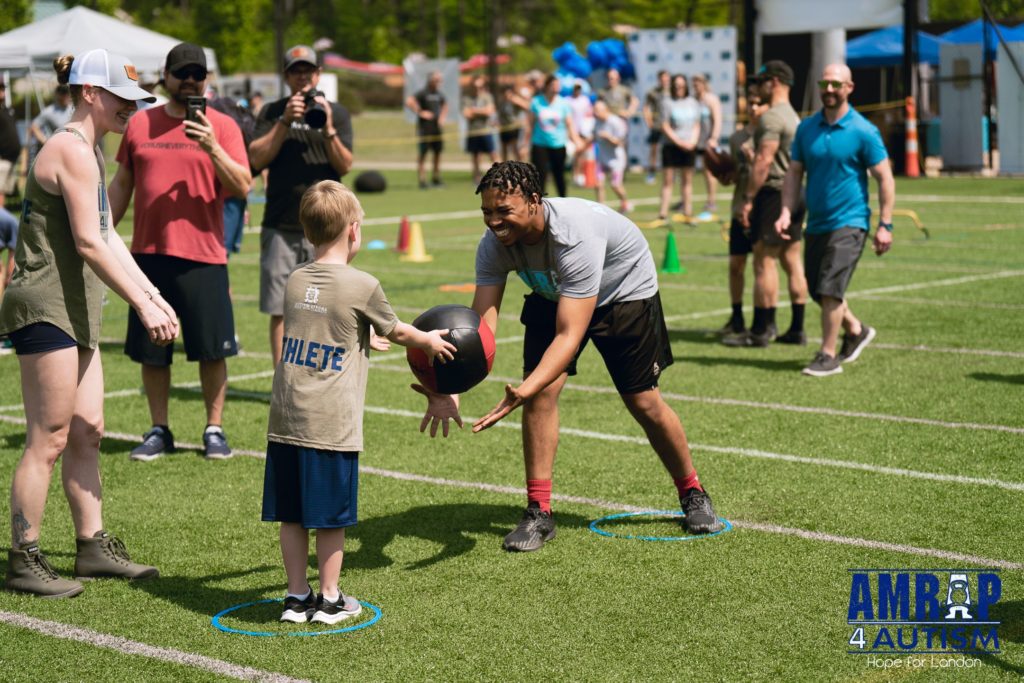A Parent’s Guide to Perspective and the Questions that Count for Children and Teens with ASD
Do sports help people with autism?
Should children with autism be encouraged to participate in sports?
What’s the difference between sports and fitness?
Autism is a diverse stratosphere. While social, cognitive, and motor challenges are the most common traits, these can vary widely from individual to individual. While we must take these individual differences in skills, challenges, and personalities into account, there are some general principles that hold for the majority of children and teens with autism.
Specific to sports and physical activity, there is a gap in both understanding and practice about what will benefit ASD individuals the most. If the question is “Do sports help people with autism?” or even “Do sports help children with autism?,” a few clarifying questions must follow.
- What do we mean by “help” and what is the expectation?
- Are we asking about “sports” when we mean “physical activity” or “fitness” for the autism population?
In Autism Fitness programming we use three categories of skill development; physical, adaptive, and cognitive. Not only can these be used to assess and address physical abilities, but also compare other programs such as sports-based or recreational activities. The three areas of ability are a must for understanding both our neurodiverse athletes and effective programs. This is the Autism Fitness PAC Profile.
Physical: How well can the individual perform this skill?
Adaptive/Behavioral: How motivated is the individual to engage in the exercise or activity?
Cognitive: How does the athlete respond to directions? How do they communicate? Are there any kinesthetic challenges?
So how do the above skills relate to sports for the autism population? We can examine the appropriateness, relative benefits, and potential drawback of sports-based (or any movement program, really) under the lens of the PAC Profile, we can evaluate whether an activity is going to have a short or long-term benefit for a child, teen, or adult with autism.
Sports vary widely and it is difficult, often erroneous, to make sweeping proclamations about “good or bad.” It is way, way more helpful to have a guiding set of questions around not only the particular sport/activity, but the “who’s” and “what’s” as well. Below is the “Golden List” of questions to consider.
- Is the sport scalable? Can the most and least skilled participants actually participate?
- What is the most important aspect of participation? Is it physical activity or socialization opportunities?
- Who is coaching? Do they understand the needs of the autistic athlete?
- Will there be a *Training effect?
- Will the physical skills be generalized?
- Will the speed of game play be overwhelming?

The Physical Aspect of Sports for Individuals with Autism
A training effect happens when we have enough practice with an exercise or movement to develop a skill. That skill may be increased strength, stability, or motor planning. All three of these are of particular value for the autism population.
When an exercise or activity is “scalable,” it can be taught at an appropriate level of challenge for the athlete. This is especially important for autism and neurodiverse individuals. Many children, teens, and adults with autism have gross motor, strength, and trunk stability deficits. An exercise or activity that is too challenging will not serve to build the right physical skills in a safe, effective way.
What’s the most important aspect of sports for those with ASD? Is it more about the physical benefits or potential socialization? If more of the emphasis is on socialization, where will the physical skills be developed? How much time will they spend actually playing the sport or moving during practice or competition? Try the stopwatch test.
During a sports practice or competitive game, clock how long the child/adolescent/teen with autism is moving. How much time to they spend in physical exertion? Is it enough to build strength, motor planning, stamina, and stability?
Generalization of physical skills is a big deal, particularly for those with autism. Sports and general fitness are often confused. Sport-specific movements do not generalize or “carryover” well to daily living or ADLs as they are too specialized. When we discuss general fitness, there is an emphasis on “big” gross motor movements;
- Pushing
- Pulling
- Squatting
- Carrying
- Hinging
While there may be elements of general gross motor movements in sports, rarely is it sufficient to develop the strength, stability, and motor planning that will enhance daily living skills for individuals with autism. Even if a child, teen, or adult with autism is participating in a competitive or recreational sport, general strength and conditioning can still serve as the foundation.
Low Motivation to Participate in Sports
Adaptive, behavioral/motivational skills are big subject matter for the autism population, and with good reason. Anxiety, a preference for sameness, rigidity, and low motivation to try new physical activities are significant obstacles to introducing and maintaining physical fitness. With regard to sports, we need to ensure that some motivational or reinforcing aspect is built in.
Children, adolescents, and teens with autism may not have initial motivation to participate in physical activity. We may need to take extra effort in creating an environment and conditions that are reinforcing. With general fitness/exercise, we can build in breaks, access to preferred activities, and other functional reinforcers. This may prove more difficult with sports.
Finally we have the cognitive component of fitness and sports for autistic children, teens, and adults. We can divide cognitive functioning into two areas; neurological and neuromuscular.
Neurological functioning refers to memory, language, and information processing.
Neuromuscular functioning refers to kinesthetic awareness, motor imitation, and movement sequencing.
The more we know about neurological and neuromuscular functioning for a given individual with autism, the better equipped we become to deliver a fitness or sports program that works for them. With the speed of competitive sports, the rules, and the stimuli, many children and teens with ASD can become overwhelmed. Even practicing the skills separately may not generalize to the environmental conditions and chaos of sport play.
Takeaways
Whether or not sports are helpful for autism is far too broad a question. While any sport or recreational activity can have a range of physical benefits, they seldom cover all major areas of movement and gross motor development. As strength, stability, and motor planning skills are typical deficits among the autism population (children and adults) these still need to be addressed with general fitness training.
A sport or recreational activity for autistic children and teens needs to be scalable. This will depend largely on the coach or instructor. The environment is a factor as well. Indoor and outdoor settings can have varying predictability and stimuli.
If you’re a parent of a child, adolescent, teen, or adult with autism and are considering a sport, martial art, or recreational activity, keep the checklist in mind. What’s the priority? Does it meet physical, adaptive, and cognitive needs? Is it scalable?
Sports may not be the answer, but general fitness programs are accessible and scalable for all individuals. It is not at all necessary to participate in a sport for an individual with autism to become stronger, fitter, and healthier at any age or ability level.

Eric Chessen, MS, is the Founder of Autism Fitness. An exercise physiologist with an extensive ABA background, Eric has spent 20 years developing successful fitness and adapted physical education programs for autism and neurodiverse populations. He is the creator of the Autism Fitness Certification and PAC Profile Assessment. Learn more at AutismFitness.com